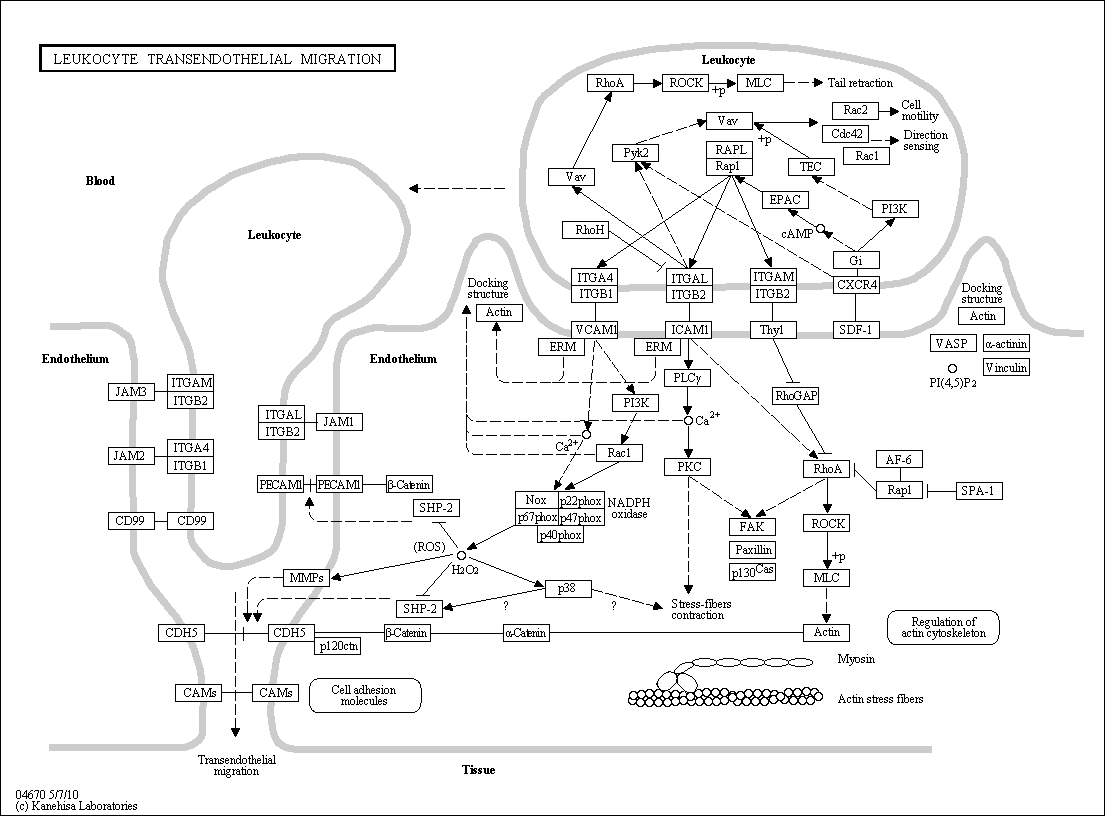Leukocyte Transendothelial Migration
Description: Leukocyte transendothelial migration (TEM) is the process by which leukocytes, or white blood cells, depart from the bloodstream and enter the surrounding tissue. This innate response is imperative for the fighting of tissue infection. The migration occurs in distinct steps referred to as the multi-step paradigm.
The first step in this process is the release of chemokines by tissue cells. The chemokines, a large family of chemotactic cytokines, cause the vascular endothelial cells to express various adhesion molecules including selectins.
As leukocytes come in contact with the endothelial cells, the selectins weakly bind to the cells and cause the leukocytes to slow down; this leads to the second step known as rolling. As the leukocytes roll along the endothelium, the chemokines released previously bind to multi-pass G-protein linked receptors on the surface of the leukocytes.
The activated G-proteins lead to integrin activation as well as adhesion. The integrin activates multiple other signaling cascades ultimately leading to the widespread actin polymerization within the cell body along with polarization. Combined, these two allow the cell to move forward via leading edge protrusion and trailing edge retraction. This process represents step three of the paradigm.
Eventually the leukocytes come upon a cell-cell junction. As the leukocytes were migrating along the endothelial cell surface, various signaling events are also occurring within the endothelial cells. Although the exact mechanism is still unclear, the intracellular signaling ultimately leads to the opening of the cell junction, allowing the leukocyte to pass through and into the underlying tissue. This is the fourth and final process, often referred to as diapedesis.

Related BMRB Molecules
For complete information about pathway, see KEGG [map04670]
